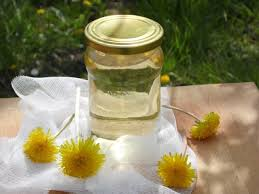I want to write about plants that affect me this spring, and share my tried and true methods and recipes.
Dandelion - syrup and cordial
It's a common plant often regarded as a weed. Most people would pull out every single one of them from the ground. Few know that it's an extremely valuable medicinal and wild edible plant, which is also an important nectar source for the rapidly declining pollinators. It blooms in spring, and in abundance.Practically the whole plant is edible. Its leaves are most tasty before flowering and can be consumed as salad. Syrup or cordial can also be made from its flowers ("dandelion honey," vegan honey).
Here's the recipe for cordial:
Ingredients:
200 dandelion flowers - the recipe can be adapted for any edible flower - elderflower, acacia, violet, lavender, rhubarb, etc. - just adjust the quantity of flowers accordingly
4 kg sugar
6 liters water
5 lemons
10 g citric acid
1 teaspoon sodium benzoate (preservative) /salicyl
Bring 6 liters of water to a boil, dissolve 4 kg of sugar in it. After cooling, add the citric acid and salicyl, then pour the mixture over the prepared flowers and sliced lemons. Let it stand covered for 1 week in a well-ventilated area, stirring daily. Then strain and pour into jars, seal them, and store them in a cool place. When straining, it's advisable to squeeze out the juice from the lemon slices. If it's not tart enough, additional citric acid can be added according to taste.
General effects of the plant:
It aids liver function, increases bile production. It improves digestion in general and can be used for bloating, upset stomach, and regulates bowel movements, relieving constipation. It's excellent for problems arising from poor liver function, such as cellulite. It reduces blood fat and dissolves cholesterol, lowers blood sugar levels. It's an excellent diuretic, useful for kidney and bladder diseases. It aids in the general function of the liver and kidneys, detoxifying the body. It's tonic, appetite-stimulating, and strengthens the body. It's used for anemia, gout, and liver diseases.
As we can see, regular consumption of pleasant dandelion cordial can do a lot for our health.
Hawthorn flowered shoot
Hawthorn is a shrub that can be found everywhere. It's a wonderful sight when it blooms en masse in spring. We should pick these flowering shoots for the sake of our heart and circulatory system. We make an infusion from it, soak it for 15 minutes, strain it, and consume it. The dried flowering shoot can be preserved and consumed throughout the year. We can also pick the berries in autumn from nature or possibly plant a cultivated variety in the garden, from which we can make jam. Its effect is similar to that of the flowering shoot.
General medicinal properties of the plant:
Heart strengthening, heart calming. It keeps the heart muscle and blood vessels flexible, promotes blood supply to the heart muscle. It dilates blood vessels, lowers blood pressure, and is good against coronary artery diseases. It helps alleviate circulatory problems, reduces the formation of atherosclerosis. It's recommended for age-related heart problems, degenerative muscle diseases of the heart. Since it affects the central nervous system, it can be used to treat dizziness, anxiety, rapid heartbeat, and shortness of breath. It's effective against nervous spasms. It has stress-relieving, calming, and sedative effects. It reduces the risk of blood clotting and can be used for tinnitus. It reduces mood swings and hot flashes in menopause.
Rosemary flowered shoot - ointment
Rosemary is not native here, meaning it's not found in the wild, only in gardens and parks. It's a well-known medicinal and culinary herb, so if you have a garden or balcony, it's worth planting. It begins to flower in spring, and excellent ointment can be made from its flowering shoots.
The general external effect of rosemary:
It increases blood circulation, has anti-inflammatory properties, so it can be used for wound healing, bruises, eczema, and even toothache. It also has a positive effect on muscle regeneration, making it the best ointment for sports injuries.
Ointment recipe:
First, soak the rosemary flowering shoots in enough vegetable oil (any will do, even sunflower), covering them completely. Let them stand in the sun for several weeks, even up to a month. During this time, an oily plant extract is made from them due to the action of sunlight and heat. When this is ready, strain it and start making the ointment.
Ingredients:
70 ml prepared vegetable oil extract
25 g of any vegetable butter (e.g., shea butter)
5 g yellow beeswax
Melt the vegetable butter and beeswax, preferably as gently as possible, over low heat.
Once melted, add the prepared vegetable oil extract. Heat and stir until the mixture is completely homogeneous. Avoid boiling the mixture.
Pour the warm mixture into containers. Be quick with this phase, as it solidifies rapidly. I use mini-sized canning jars for this. Seal them immediately, wait for them to solidify, and then they are ready to use. Stored in the refrigerator, it can last for months.
Linda






